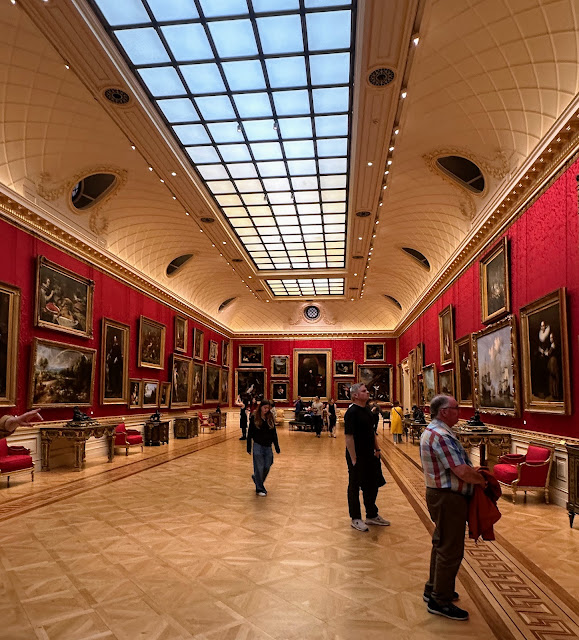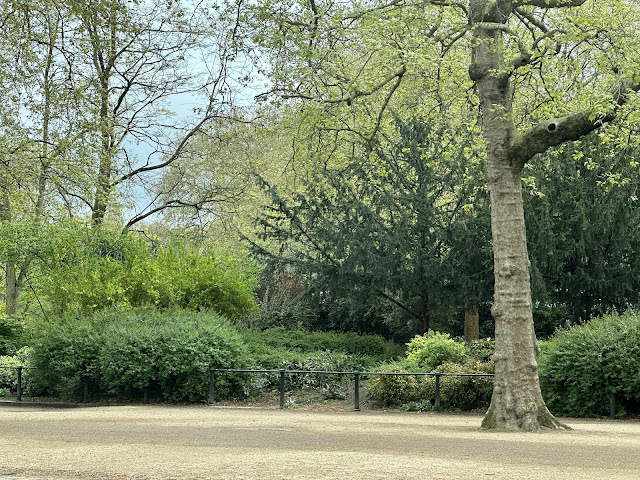If you roll my blog back fifteen years, you'll find one where I confided age 60 was making me acknowledge my mortality. My premise was you can't pretend you're middle aged anymore when you are hitting 60. I won't rehash that blog, but I was shocked at how I seemed to hit a nerve with my readers. Lots of comments.
Roll forward fifteen years, and suddenly, I'm 75. Well...... I feel lucky to still be alive since I know several friends who just aren't. At the same time, 60 looks pretty darn good considering the amount my body had deteriorated in the past 15 years. Here's what I'm talking about: I'll catalog from best to worst.
1) Gray hair - I wish I had my Gram's white cotton hair, but no, I have my Cherokee grandmother's iron gray hair, but only framing my face. My hair looks 40 from the back since it's still dark brown back there. I really only started getting gray hair at all in the last ten years. I have one large lock of pure white hair right above my left eye, and I color that swatch with various colors (using hair crayons) to match my outfits. That's called making lemonade out of lemons.
2) Wrinkles - I can brag about these. They are tiny and can still be camouflaged with judicious makeup. I've actually had strangers walk up to me and compliment my complexion. When I say, I'm ____, they always ask, "Where are your wrinkles?" Depending on my mood, I give my Edwardian grandmother credit for selling me on the idea of covering up when out in the sun, or I make some zany comment and point them all out.
I started taking my Gram's advice to heart when I was 14 - long prior to being able to buy sunscreen. I wore long sleeved gauze blouses and long pants together with gigantic hats especially to the beach or pool - including a huge sun hat I got from an Astro's promotional giveaway - which I'm ashamed to admit - I still have. If I hadn't smoked cigarettes forever, my wrinkles would be even smaller and fewer. Truthfully, wrinkles or no wrinkles are often dependent on your genes, but lack of sun exposure tops any genetic help.
3) Incontinence - I'll live with this since I got the prize. The prize's name is Sarah Lynn. She jumped up and down on my bladder, destroyed the lining, made me susceptible to UTI's, and incontinence when I laugh too hard, cough, sneeze, run, or jump up and down. I finished the only 5K run/walk I've ever tried when I was 38 with a big, embarrassing wet spot on the front and back of my pants. I just pretended it was sweat, and nobody even said anything. That experience taught me you can just brazen this situation out and dare anybody to be brave enough to make a comment.
4) Dots, spots, and marks: While I may not have a bunch of wrinkles, I do have red dots, brown spots, and new freckles. I actually look like a dot to dot worksheet. You know, connect the numbered dots, and you have the outline of a picture to color. If my dots and spots were numbered, I'd have the outline of a witch, or truthfully, of a bitch. I can't change these, and I'm looking at a red spot that just popped up today. Sigh..... just part of the fun stuff of your body aging
5) Brain slow down - This is the first serious one. About five years ago, I discovered I'd lost the ability to spell. Up until this point, I could scribble down a word and tell if it was spelled correctly or not (visual learner, here). Now, I find I sometimes can't even figure out how to spell a multisyllable word once I get past the first syllable. I'm so grateful for spell check since I can phonic it, and the smart guy inside the computer can figure out what I'm trying to say. I always felt lucky that spelling was easy for me. Now I understand how the folks who've never been able to spell feel.
Brain slow down #2: There are the vanished words. This is worse than the sudden loss of spelling ability. Here's an example from this blog: See the word 'brazen' in the #3 item above? I couldn't think of the word as I was writing the sentence. I knew exactly what I wanted to say, but my brain couldn't find the word inside my interior dictionary. I just want to scream when this happens. The frustration level is sky high. To find the word 'brazen', I finally looked up synonyms for "lack of embarrassment" and it popped up. Internally, it dropped into place the second I saw the word. This also happens when I'm talking. If I'm with other people, I sometimes practice inside my head what I want to say before saying it to avoid being left high and dry while grasping for a word that won't come. My grandson told me recently that I knew every word there is. I just accepted the compliment, while my interior monolog was saying, "Not anymore."
6) (Now, we're getting into the SERIOUS stuff.) Pain. There's no way to sugarcoat this. My family's Achille's heel is osteoarthritis. I'm so grateful it's not rheumatoid, but there's also no magic medication for the pain of osteoarthritis. On any given day, I have pain in my toes (when I can feel them), my knees, my hips, up and down my back, both shoulders, and my hands. I wake up in pain; I go to bed in pain. I've learned that as I've gotten older, it's all gotten worse. I've also learned that no one wants to hear about it. Occasionally, in private, I weep from the constancy. In public, I try to pretend it doesn't exist. I know all the tricks to hold the pain at a level I can live with. At age 40 I couldn't imagine this pain; at 60 I saw it on the horizon. Now, at 75, it's just a way of life. Bah, humbug. Don't pity me. I can name several friends who have it much, much, much worse than I do. Actually, if you took away the osteoarthritis, I would be in great shape, and I have the medical tests to prove it. Still, let's talk about the elephant in the room.
Mortality. At age 75, I'm not just older, I'm elderly. It's all downhill from here. At age 60 I had just crested the hill; at 75 I'm picking up speed rolling down the proverbial hill at an alarming rate. Thus, I have been contemplating my death. I always like to be prepared. Death comes to all of us. No one gets out of this life alive. Not saying the word, or not thinking about it won't hold it off. And, you can't take anything with you when you go. One of my favorite plays was written by George Kaufman/Moss Hart premiering on Broadway in 1936 '. It's called, "You Can't Take it With You". It's all about the idea that wealth and things really won't make you happy. Happiness comes from engagement with other people and from experiences.
I've never been a material goods person. My idea of decorating through most of my adult life was to put up another bookcase. My clothes have always been home made, bought on clearance, in garage sales, or thrift stores. I prefer experiences to stuff. Downsizing from a four bedroom house to a 10'x20' storage unit really brought home to me how little all the 'stuff' we drag around with us really matters. We've downsized twice, and it's time to contemplate what stuff we are dragging around that we don't need.
What is painful is watching my friends facing THEIR mortality, and some of them cashing in their tickets. Dying is the easy part. Being left behind to deal with the loss and grief is what is really difficult. Of course, some deaths easier than others. At this point, I just wish easy deaths for elderly people I know, and if I had my druthers, I'll take one of those for myself.
I don't think I'm afraid to die. However, it might like being pregnant - you never know how you'll really feel until you're facing it. I do believe there's more than the worms after you kick it. Maybe that's wishful thinking, but I'm up for another adventure. Even worshiping science and technology like we do today hasn't changed my mind a bit. I think there's something 'more' after this earthly plain. I'm also sure it can't be described and catalogued.
One thing that does keep happening to me is the realization my every experience may be for the last time. Maybe it's seeing the ocean. Maybe it's a favorite dish I don't eat very often. Maybe it's an intensely personal experience. Maybe this next trip will be the last one. With that in mind, I'm trying to be more in the moment. If you talk to really elderly people, they live in the day, in their current experience. They don't worry about either the past or the future. Just think, it only takes being ancient to understand how to be mindful and in the moment. So, that's my goal. Trying to enjoy what life I have left.
Reality: Here today; gone tomorrow. Looking back with regrets is just stupid. You can't change it. Why dwell on it? I've found as I've aged into elderly it's easy to be depressed about missing friends, the state of the world, or what has been lost. It's much harder to look for the silver and gold happening all around and seizing it. So, look around when you put this essay down and focus on something you can see which makes you happy or brings up a treasured memory. Life is short. Eat the cake.










































